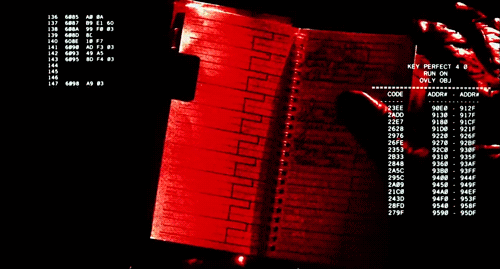#Natural Language Process
Explore tagged Tumblr posts
Text

Qicon Provides Data Science Course Training with real time project .We also provide interview questions for data science.ML python stats tableau datamining sql bigdata Ml deployment & flask api
#classroom training#online training#interview questions#demo video#concepts#project training#live classses#Python +Statistics & Probability#Machine Learning#Natural Language Process#Deep Learning#Data Visualization#Real Time project#software training#reasonable price#lab facility#best training center
1 note
·
View note
Text
OKAY OKAY, SO SO SO. A HUGE HAPPY BIRTHDAY TO @lyngracetalksnwritesnstuff, WHO IS SUCH A SWEETIE AND MUST BE GIVEN MANY CLAPS ON THIS HAPPY DAY. As like a 'birthday present' type thing, I asked them for an AU prompt, and they gave ME a "time travel AU". So, me being me, I thought about this a lot last night, and you know, I've got a concept idea, because I always do.
So, I've got two basic ideas. Going into the PAST, and going into the FUTURE. I'm going to elaborate on the latter here, because that was most interesting to me, but if Lyn wants me to yap about the former as well, it's their birthday present! They can do what they want, I am merely a humble human who bends to their whims upon this gracious day (and probably tomorrow as well so I can actually write about the former idea if they wish it).
To clarify, Lan Huan had never expected to stumble across a body lying face down in the dirt. He can quite honestly state that he would never want to come across such a thing in his daily runs. However, coming to a slow halt beside what appeared to be a cosplayer of sorts, he has the sinking feeling that this may be like all of the horror stories he has heard about of innocent joggers and dog-walkers finding corpses upon their travels. Before he jumps to a conclusion so drastic, however, he reminds himself that he is in fact a doctor, one that has dealt with patients of various states (including dead) before, so he steels himself and walks over to where this white robed individual seems to be splayed out on the floor just a few feet away from the main walking path of the forest. Why would a cosplayer come this far out? Must be rather dedicated to getting the best shot if they're alone.
He first kneels down to check the pulse of his impromptu patient, breathing out a sigh of utter relief to find that this individual is not dead. At least, not yet. (That was a less relieving thought). He then sets about turning the person over onto their back, scanning to make sure there are no injuries that demand immediate attention - the good thing about the (impossibly clean) white fabric is that if there were any blood, then it would be noticeable almost right away. Now that he is certain that the patient is not dead or otherwise grievously injured, he considers how to wake the individual up, noting that there is something covered in a white cloth nearby that likely belongs to this person. There is a pouch of sorts hanging from their belt as well as an empty sheath, but all of that is thrown out of his mind when he gets a look at the stranger's face.
Lan Huan is aware that many Lans are said to have many similar features, which is why it's startling to see this random person sporting many of the same features he himself has, as well as the white forehead ribbon exclusive to the Lan. Clouds and all. He pauses, trying to rationalise this in his head - the Lan have a rich history, he's certain that there are many fictional characters based on their family, so it could just be that this individual has familiar features and decided to cosplay one of these characters! This makes sense to him, so he reaches out to gently shake the shoulder with a gentle "excuse me?" The words are barely out of his mouth before this stranger's eyes shoot open and he only just avoids getting headbutted by the person (presumably a man, and a young one at that) as he sits upright. He appears to be confused if the furrow in his brows marring his otherwise stoic expression is anything to go by, and he turns to him with a rather scrutinising gaze.
When the man doesn't say anything, he takes initiative to start the conversation with a "my name is Lan Huan. Are you alright? Do you remember how you got here?" The stranger only seems to be more confused, the furrow in his brow deepening as he looks around once more before turning back to him. The stranger opens his mouth to speak, and Lan Huan is ashamed to admit that he has no clue what he's saying. He seems to be talking some variant of Chinese, but not one that he himself has heard before, which means that this has just become a lot more of a challenge for him. He frowns, finding the same expression mirrored (to a lesser extent) on the other individual's face, and then pulls out his phone (missing the confusion and then shock flitting through the person's eyes) and goes to his map app.
He holds his phone out to the stranger, gesturing for him to point out where he was from. It's rather complicated, with him pointing to himself and then to Gusu, which is where they are, and then pointing to the stranger and gesturing to the screen. The stranger looks between him and the phone as though he has grown at least two more heads, before reaching into the pouch hanging at his side and pulling out a folded piece of paper, which he opens up to reveal a map! Although this map seems distinctly...different to what he is used to seeing when looking at a map of China, and leaning in reveals that everything on the map is written in a variant of Chinese that he has only ever seen on the original Lan precepts displayed in the Cloud Recesses - the university funded by the Lan. Either this individual is incredibly committed to his cosplay or there is something far stranger going on.
He hands Lan Huan the map, instead focusing on unwrapping the clothed object nearby to reveal a guqin and checking it over before wrapping it back up and then just casually hoisting it up onto his back?? Lan Huan isn't even looking at the map anymore, just watching while he reaches down and notices his sheath is empty - panic flits through his eyes for less than a second, hand reaching out into the direction of the forest. This is all very confusing until a sword comes flying out of the forest into the stranger's awaiting hand. Like. What. What the fuck? He's feeling rather shellshocked, and likely looks it when the man turns to look back at him expectantly, but this man is still his patient and the Lan are very known for being calm in the wildest situation. He is a doctor, damn it! Think about this logically!! Even if there is no logic to this situation, he has to help.
He shoves aside all of his confusion, grabbing a stick and using his foot to clear a space on the forest floor before kneeling down and utilising the stick to carefully draw out the few characters his shufu had drilled into his head when trying to get him to remember at least a little of the language used to write the original precepts. "Gusu Lan". The stranger, who has been watching him work with cautious curiosity, suddenly lights up (the furrow in his brow smooths out) and nods his head once as he looks back at Lan Huan. So. This man understands the language that has not been used in centuries. That's...confusing. But, this man is evidently a member of the Lan clan based on looks and context clues (the time era he's from is...less obvious), and Lan Huan has always been taught to help out family. He squares his shoulders and looks back at the man watching him with a raised brow. Didn't Shufu say something about one of his students had taken up the strange hobby of trying to learn the old language used to write the precepts?
#Hanguang jun goes to the future AU#HAPPY BIRTHDAY LYN!!!!!#HAPPY BIRTHDAY OH EM GEE#I HOPE IT'S BEEN GOOD!!!!!!!#I hope you enjoy my rambling#let me know if you liked it!!! I'm so willing to write more for you!!!! :D#I don't really talk about time travel much in my AUs#so this was new for me!!#I enjoyed it a lot#also to clear up some things#Lan Wangji is NOT being even remotely more expressionate than usual#I just think that Lan Xichen would have a natural skill in reading his didi (no matter the circumstances)#so he's biased when it comes to how Lan Wangji is reacting#also Lan Huan and Lan Wangji having the same thought process of dealing with the language barrier is funny to ME#also the language that Lan Wangji is utilising is one that inhabitants of Gusu used#one that faded out as other variants began to take their place#the only surviving records of the language exist in the Gusu Lan's possession#which is why it's a big thing that Wei Wuxian is trying to decipher and learn the language#he's got so much time on his hands#without Lan Wangji to tease he's not as much of a nuisance so Lan Qiren looks upon him less brutally#so he gets to look at the historical artefacts (as long as Lan Qiren is present)#(and with a lot of precautions in place)#grandmaster of demonic cultivation#mo dao zu shi#mxtx mdzs#mdzs au#mdzs#lan wangji#lan zhan#lan xichen
28 notes
·
View notes
Text
Being a pokespe fan is so easy because i read normal papers about computer graphics and they say stuff like: the rgb component.
And im like: oh my god! Its them, my blorbos! ❤️💚🩵 And them im very happy
#elis posts#Pokespe#Trainer red#Trainer blue#Trainer green#Blue oak#Green oak#Okay to be super fair when i today actually read sruff on computer graphics i did jot notice#But now on natural language processing when thne mentioned red blue green i was immediatly yes#Blorbos
22 notes
·
View notes
Text
Asking scientists to identify a paradigm shift, especially in real time, can be tricky. After all, truly ground-shifting updates in knowledge may take decades to unfold. But you don’t necessarily have to invoke the P-word to acknowledge that one field in particular — natural language processing, or NLP — has changed. A lot. The goal of natural language processing is right there on the tin: making the unruliness of human language (the “natural” part) tractable by computers (the “processing” part). A blend of engineering and science that dates back to the 1940s, NLP gave Stephen Hawking a voice, Siri a brain and social media companies another way to target us with ads. It was also ground zero for the emergence of large language models — a technology that NLP helped to invent but whose explosive growth and transformative power still managed to take many people in the field entirely by surprise. To put it another way: In 2019, Quanta reported on a then-groundbreaking NLP system called BERT without once using the phrase “large language model.” A mere five and a half years later, LLMs are everywhere, igniting discovery, disruption and debate in whatever scientific community they touch. But the one they touched first — for better, worse and everything in between — was natural language processing. What did that impact feel like to the people experiencing it firsthand? Quanta interviewed 19 current and former NLP researchers to tell that story. From experts to students, tenured academics to startup founders, they describe a series of moments — dawning realizations, elated encounters and at least one “existential crisis” — that changed their world. And ours.
#this article was such an interesting read#nlp#natural language processing#quanta magazine#language#linguistics#john pavlus#llm#queue cutie
13 notes
·
View notes
Text









Termovision HUD from The Terminator (1984) A head-up display (HUD) is a transparent display that presents data over a visual screen. A Termovision refers to HUD used by Terminators to display analyses and decision options.
#terminator#computer vision#pattern recognition#red#sci fi#hud#OCR#termovision#natural language processing
61 notes
·
View notes
Text
The Intersection of NLP Eye Movement Integration and the Lesser Banishing Ritual of the Pentagram: A Comparative Analysis

Introduction
Neuro-Linguistic Programming (NLP) has long been associated with cognitive restructuring and psychotherapeutic interventions. One particularly compelling technique within NLP is Eye Movement Integration (EMI), which utilizes guided eye movements to access and integrate fragmented or traumatic memories. Simultaneously, the Lesser Banishing Ritual of the Pentagram (LBRP), a foundational ceremonial magick practice from the Western esoteric tradition, employs ritualized gestures and visualizations of pentagrams to clear and harmonize psychological and spiritual space. This essay explores the striking structural similarities between EMI and the LBRP and considers the possibility that both methods engage hemispheric synchronization and cognitive integration in analogous ways.
The Structure of EMI and LBRP
Eye Movement Integration (EMI) involves tracing figure-eight (∞) or infinity-loop movements with the eyes while engaging in conscious recall of emotionally charged experiences. According to NLP theories, this process activates both hemispheres of the brain, allowing for greater coherence in how memories are processed and reintegrated (Bandler & Grinder, 1982). EMI techniques suggest that deliberate movement across specific spatial axes stimulates neural pathways responsible for sensory and emotional integration (Ward, 2002).
Similarly, the LBRP involves a structured sequence of visualized pentagrams drawn in the cardinal directions, accompanied by divine names and ritual gestures. This sequence is designed to invoke protective forces and create a harmonized psychic field. According to the Golden Dawn tradition (Cicero, 1998), the act of tracing the pentagram is intended to engage multiple layers of cognition: visual-spatial processing, linguistic invocation, and kinesthetic anchoring.
Shared Cognitive and Psychological Mechanisms
Bilateral Stimulation and Neural Integration
Both EMI and LBRP involve movements across spatial dimensions that engage both brain hemispheres.
EMI’s horizontal and diagonal eye movements mimic the process of following the pentagram’s path in ritual, possibly facilitating left-right hemisphere synchronization (Bandler & Grinder, 1982).
Symbolic Encoding and Cognitive Anchoring
EMI often integrates positive resource states during the eye-tracing process, allowing new neurological connections to be formed. The LBRP similarly encodes protective and stabilizing forces into the practitioner’s consciousness through repeated use of divine names and pentagram tracings (Cicero, 1998).
The act of drawing a pentagram in ritual space may serve as an ‘anchor’ to a specific neurological or psychological state, much like NLP anchoring techniques (Hine, 1995).
Emotional and Energetic Reset
EMI is used to defragment and neutralize distressing memories, reducing their disruptive impact. The LBRP, in an esoteric context, serves to “banish” intrusive or unwanted energies, clearing space for more intentional psychological and spiritual work (Cicero, 1998).
Practitioners of both techniques report a sense of clarity, release, and heightened awareness following their use (Hine, 1995).
Implications for Technomagick and NLP Applications
The intersection of NLP and ceremonial magick suggests that structured, repetitive movement combined with intentional focus has profound cognitive and psychological effects. In a Neo-Technomagickal framework, this insight could lead to further experimentation with custom sigils designed for EMI-style integration, or AI-assisted visualization tools for ritual practice.
Future research could examine:
Whether specific geometries (e.g., pentagrams, hexagrams) in ritual movement impact cognitive processing similarly to NLP techniques.
The effectiveness of LBRP-derived rituals in clinical or self-development contexts, particularly for trauma resolution.
The potential for EEG and neurofeedback studies comparing EMI and ritualized eye-tracing methods.
Conclusion
While originating from vastly different paradigms, NLP’s EMI technique and the LBRP share fundamental principles of hemispheric integration, cognitive anchoring, and structured movement through symbolic space. Whether consciously designed or stumbled upon through esoteric practice, these methodologies hint at deep underlying mechanisms of the human mind’s capacity for self-regulation and transformation. Understanding their similarities provides an opportunity to bridge the domains of magick, psychology, and neuroscience, opening new avenues for exploration in both mystical and therapeutic contexts.
G/E/M (2025)

References
Bandler, R., & Grinder, J. (1982). Reframing: Neuro-Linguistic Programming and the Transformation of Meaning. Real People Press.
Cicero, C. & Cicero, S. T. (1998). Self-Initiation into the Golden Dawn Tradition. Llewellyn Publications.
Hine, P. (1995). Condensed Chaos: An Introduction to Chaos Magic. New Falcon Publications.
Ward, K. (2002). Mind Change Techniques to Keep the Change. NLP Resources.
#magick#technomancy#chaos magick#neotechnomagick#neotechnomancer#cyber witch#neotechnomancy#cyberpunk#technomagick#technology#nlp#nlp training#nlp techniques#nlp practitioner#natural language processing#artificialintelligence#nlp coach#neurocrafting#neuromancer#neuroscience#neuro linguistic programming
9 notes
·
View notes
Text
So I was thinking about the Fall of Numenor, as you do.
In SA 3319 there's the Great Wave and Sauron falls into the sea. In TA 3019 Sauron falls, period, and Faramir has a vision of the Great Wave.
[also: Tolkien and numbers, 1, 3, 7 and 9 as the main components of many importand dates, also 1939 was a year]
And I asked myself: At what time of the year did Numenor fall?
There's no clear info, but it was green (did they have winters at all? In the late period I imagine they had harsher climate, so winters might have had snow and summers draught???)
We have a maybe-hint with Tar-Miriel climbing the mountain. I know she could go there anyway, but it would have more impact if it was one of the holy days. So: beginning of spring, mid-summer, or and of autumn.
In other words: spring equinox, early-mid August, or winter solistice.
With the weather maybe suggesting the first. Which... positions it very close (if not: at the same exact date) to the fall of Sauron in TA.
#Sir.#How many things do I have to dig up to notice them?#Not to remind anyone of “you have to read and process the Silm to understand why two things Gimli doest in LotR are actually hilarious”#[Galadriel's hair and “let's swear an oath”]#Sir you are wonderful :D#but also really weird at times#but#it does make sense yk#just needs a couple referencing#but you know sea falling on of people... we've seen it somewhere else already#hmmmm...#do the gondorians make straw dolls of sauron to drown them when spring comes?#...yea ok i am headcanoning the numenor fell in spring it works too well to not hc it#and may be even canon#[autumn would have the language pun but it's much less]#[and summer has most storms naturally? not that it matters]#[but: sea falling on people. must be spring.]
8 notes
·
View notes
Text
AI-powered Typo Hunting: Trust Your Docs, Readers Will
Our documentation has a trust problem, and I just found 142 reasons why. It started with a silly typo I noticed on one of the pages – something like “cotnact” instead of “contact”. It was quick to fix, but it got me thinking: are there more?Third‑party writing assistants are available as browser extensions, and we also have a spelling mistake checker available within Jetpack. With such tools,…
3 notes
·
View notes
Text

Bayesian Active Exploration: A New Frontier in Artificial Intelligence
The field of artificial intelligence has seen tremendous growth and advancements in recent years, with various techniques and paradigms emerging to tackle complex problems in the field of machine learning, computer vision, and natural language processing. Two of these concepts that have attracted a lot of attention are active inference and Bayesian mechanics. Although both techniques have been researched separately, their synergy has the potential to revolutionize AI by creating more efficient, accurate, and effective systems.
Traditional machine learning algorithms rely on a passive approach, where the system receives data and updates its parameters without actively influencing the data collection process. However, this approach can have limitations, especially in complex and dynamic environments. Active interference, on the other hand, allows AI systems to take an active role in selecting the most informative data points or actions to collect more relevant information. In this way, active inference allows systems to adapt to changing environments, reducing the need for labeled data and improving the efficiency of learning and decision-making.
One of the first milestones in active inference was the development of the "query by committee" algorithm by Freund et al. in 1997. This algorithm used a committee of models to determine the most meaningful data points to capture, laying the foundation for future active learning techniques. Another important milestone was the introduction of "uncertainty sampling" by Lewis and Gale in 1994, which selected data points with the highest uncertainty or ambiguity to capture more information.
Bayesian mechanics, on the other hand, provides a probabilistic framework for reasoning and decision-making under uncertainty. By modeling complex systems using probability distributions, Bayesian mechanics enables AI systems to quantify uncertainty and ambiguity, thereby making more informed decisions when faced with incomplete or noisy data. Bayesian inference, the process of updating the prior distribution using new data, is a powerful tool for learning and decision-making.
One of the first milestones in Bayesian mechanics was the development of Bayes' theorem by Thomas Bayes in 1763. This theorem provided a mathematical framework for updating the probability of a hypothesis based on new evidence. Another important milestone was the introduction of Bayesian networks by Pearl in 1988, which provided a structured approach to modeling complex systems using probability distributions.
While active inference and Bayesian mechanics each have their strengths, combining them has the potential to create a new generation of AI systems that can actively collect informative data and update their probabilistic models to make more informed decisions. The combination of active inference and Bayesian mechanics has numerous applications in AI, including robotics, computer vision, and natural language processing. In robotics, for example, active inference can be used to actively explore the environment, collect more informative data, and improve navigation and decision-making. In computer vision, active inference can be used to actively select the most informative images or viewpoints, improving object recognition or scene understanding.
Timeline:
1763: Bayes' theorem
1988: Bayesian networks
1994: Uncertainty Sampling
1997: Query by Committee algorithm
2017: Deep Bayesian Active Learning
2019: Bayesian Active Exploration
2020: Active Bayesian Inference for Deep Learning
2020: Bayesian Active Learning for Computer Vision
The synergy of active inference and Bayesian mechanics is expected to play a crucial role in shaping the next generation of AI systems. Some possible future developments in this area include:
- Combining active inference and Bayesian mechanics with other AI techniques, such as reinforcement learning and transfer learning, to create more powerful and flexible AI systems.
- Applying the synergy of active inference and Bayesian mechanics to new areas, such as healthcare, finance, and education, to improve decision-making and outcomes.
- Developing new algorithms and techniques that integrate active inference and Bayesian mechanics, such as Bayesian active learning for deep learning and Bayesian active exploration for robotics.
Dr. Sanjeev Namjosh: The Hidden Math Behind All Living Systems - On Active Inference, the Free Energy Principle, and Bayesian Mechanics (Machine Learning Street Talk, October 2024)
youtube
Saturday, October 26, 2024
#artificial intelligence#active learning#bayesian mechanics#machine learning#deep learning#robotics#computer vision#natural language processing#uncertainty quantification#decision making#probabilistic modeling#bayesian inference#active interference#ai research#intelligent systems#interview#ai assisted writing#machine art#Youtube
6 notes
·
View notes
Text
I am very enthusiastic in NLP and LLMs and am always excited to learn something new about it! Plus since I happened to be a junior student major in AI, and regard NLP as my interest of research, I'm taking this is as a serious career choice.
I'll keep learning about innovations and philosophy in this field, and will always be happy communicate with fellas. But I found no NLP community in this platform (maybe I was blocked though, this app design looks weird), so I built a community to talk about technologies for natural language processing. Hope you'll like it and welcome to join the community.
New here btw, I am not sure if there are any convenient feature to share the community. I just put the link here.
https://www.tumblr.com/communities/nlp-pathways
6 notes
·
View notes
Text
Tom and Robotic Mouse | @futuretiative
Tom's job security takes a hit with the arrival of a new, robotic mouse catcher.
TomAndJerry #AIJobLoss #CartoonHumor #ClassicAnimation #RobotMouse #ArtificialIntelligence #CatAndMouse #TechTakesOver #FunnyCartoons #TomTheCat
Keywords: Tom and Jerry, cartoon, animation, cat, mouse, robot, artificial intelligence, job loss, humor, classic, Machine Learning Deep Learning Natural Language Processing (NLP) Generative AI AI Chatbots AI Ethics Computer Vision Robotics AI Applications Neural Networks
Tom was the first guy who lost his job because of AI
(and what you can do instead)
⤵
"AI took my job" isn't a story anymore.
It's reality.
But here's the plot twist:
While Tom was complaining,
others were adapting.
The math is simple:
➝ AI isn't slowing down
➝ Skills gap is widening
➝ Opportunities are multiplying
Here's the truth:
The future doesn't care about your comfort zone.
It rewards those who embrace change and innovate.
Stop viewing AI as your replacement.
Start seeing it as your rocket fuel.
Because in 2025:
➝ Learners will lead
➝ Adapters will advance
➝ Complainers will vanish
The choice?
It's always been yours.
It goes even further - now AI has been trained to create consistent.
//
Repost this ⇄
//
Follow me for daily posts on emerging tech and growth
#ai#artificialintelligence#innovation#tech#technology#aitools#machinelearning#automation#techreview#education#meme#Tom and Jerry#cartoon#animation#cat#mouse#robot#artificial intelligence#job loss#humor#classic#Machine Learning#Deep Learning#Natural Language Processing (NLP)#Generative AI#AI Chatbots#AI Ethics#Computer Vision#Robotics#AI Applications
4 notes
·
View notes
Text
btw i'm a cunning linguist and i'm pro at grammar
6 notes
·
View notes
Text
Key Differences Between AI and Human Communication: Mechanisms, Intent, and Understanding
The differences between the way an AI communicates and the way a human does are significant, encompassing various aspects such as the underlying mechanisms, intent, adaptability, and the nature of understanding. Here’s a breakdown of key differences:
1. Mechanism of Communication:
AI: AI communication is based on algorithms, data processing, and pattern recognition. AI generates responses by analyzing input data, applying pre-programmed rules, and utilizing machine learning models that have been trained on large datasets. The AI does not understand language in a human sense; instead, it predicts likely responses based on patterns in the data.
Humans: Human communication is deeply rooted in biological, cognitive, and social processes. Humans use language as a tool for expressing thoughts, emotions, intentions, and experiences. Human communication is inherently tied to understanding and meaning-making, involving both conscious and unconscious processes.
2. Intent and Purpose:
AI: AI lacks true intent or purpose. It responds to input based on programming and training data, without any underlying motivation or goal beyond fulfilling the tasks it has been designed for. AI does not have desires, beliefs, or personal experiences that inform its communication.
Humans: Human communication is driven by intent and purpose. People communicate to share ideas, express emotions, seek information, build relationships, and achieve specific goals. Human communication is often nuanced, influenced by context, and shaped by personal experiences and social dynamics.
3. Understanding and Meaning:
AI: AI processes language at a syntactic and statistical level. It can identify patterns, generate coherent responses, and even mimic certain aspects of human communication, but it does not truly understand the meaning of the words it uses. AI lacks consciousness, self-awareness, and the ability to grasp abstract concepts in the way humans do.
Humans: Humans understand language semantically and contextually. They interpret meaning based on personal experience, cultural background, emotional state, and the context of the conversation. Human communication involves deep understanding, empathy, and the ability to infer meaning beyond the literal words spoken.
4. Adaptability and Learning:
AI: AI can adapt its communication style based on data and feedback, but this adaptability is limited to the parameters set by its algorithms and the data it has been trained on. AI can learn from new data, but it does so without understanding the implications of that data in a broader context.
Humans: Humans are highly adaptable communicators. They can adjust their language, tone, and approach based on the situation, the audience, and the emotional dynamics of the interaction. Humans learn not just from direct feedback but also from social and cultural experiences, emotional cues, and abstract reasoning.
5. Creativity and Innovation:
AI: AI can generate creative outputs, such as writing poems or composing music, by recombining existing patterns in novel ways. However, this creativity is constrained by the data it has been trained on and lacks the originality that comes from human creativity, which is often driven by personal experience, intuition, and a desire for expression.
Humans: Human creativity in communication is driven by a complex interplay of emotions, experiences, imagination, and intent. Humans can innovate in language, create new metaphors, and use language to express unique personal and cultural identities. Human creativity is often spontaneous and deeply tied to individual and collective experiences.
6. Emotional Engagement:
AI: AI can simulate emotional engagement by recognizing and responding to emotional cues in language, but it does not experience emotions. Its responses are based on patterns learned from data, without any true emotional understanding or empathy.
Humans: Human communication is inherently emotional. People express and respond to emotions in nuanced ways, using tone, body language, and context to convey feelings. Empathy, sympathy, and emotional intelligence play a crucial role in human communication, allowing for deep connections and understanding between individuals.
7. Contextual Sensitivity:
AI: AI's sensitivity to context is limited by its training data and algorithms. While it can take some context into account (like the previous messages in a conversation), it may struggle with complex or ambiguous situations, especially if they require a deep understanding of cultural, social, or personal nuances.
Humans: Humans are highly sensitive to context, using it to interpret meaning and guide their communication. They can understand subtext, read between the lines, and adjust their communication based on subtle cues like tone, body language, and shared history with the other person.
8. Ethical and Moral Considerations:
AI: AI lacks an inherent sense of ethics or morality. Its communication is governed by the data it has been trained on and the parameters set by its developers. Any ethical considerations in AI communication come from human-designed rules or guidelines, not from an intrinsic understanding of right or wrong.
Humans: Human communication is deeply influenced by ethical and moral considerations. People often weigh the potential impact of their words on others, considering issues like honesty, fairness, and respect. These considerations are shaped by individual values, cultural norms, and societal expectations.
The key differences between AI and human communication lie in the underlying mechanisms, the presence or absence of intent and understanding, and the role of emotions, creativity, and ethics. While AI can simulate certain aspects of human communication, it fundamentally operates in a different way, lacking the consciousness, experience, and meaning-making processes that characterize human interaction.
#philosophy#epistemology#knowledge#learning#education#chatgpt#metaphysics#ontology#AI Communication#Human Communication#Language Understanding#Natural Language Processing#Machine Learning#Cognitive Science#Artificial Intelligence#Emotional Intelligence#Ethics in AI#Language and Meaning#Human-AI Interaction#Contextual Sensitivity#Creativity in Communication#Intent in Communication#Pattern Recognition
5 notes
·
View notes
Text
Growing in a tall man's shadow
youtube
There is a debate happening in the halls of linguistics and the implications are not insignificant.
At question is the idea of recursion: since the 1950s, linguists have held that recursion is a defining characteristics of human language.
What happens then, when a human language is found to be non-recursive?
Here, Noam Chomsky, who first placed the idea of recursion on the table, is the tall man.
And, Daniel Everett, a former missionary to the Piraha tribe in the Amazon forest, is the upstart.
At stake is one of the most important ideas in modern linguistics: recursion.
Does a human language have to be recursive? That's the question Everett poses; and advances the argument that recursion is not inherent to being human.
From the Youtube description of the documentary:
Deep in the Amazon rainforest, the Pirahã people speak a language that defies everything we thought we knew about human communication. No words for colors. No numbers. No past. No future. Their unique way of speaking has ignited one of the most heated debates in linguistic history. For 30 years, one man tried to decode their near-indecipherable language—described by The New Yorker as “a profusion of songbirds” and “barely discernible as speech”. In the process, he shook the very foundations of modern linguistics and challenged one of the most dominant theories of the last 50 years: Noam Chomsky’s Universal Grammar. According to this theory, all human languages share a deep, innate structure—something we are born with rather than learn. But if the Pirahã language truly exists outside these rules, does it mean that everything we believed about language was wrong? If so, one of the most powerful ideas in linguistics could crumble.
Documentary: The Amazon Code
Directed by: Randal Wood, Michael O’Neill
Production : Essential Media, Entertainment Production, ABC Australia, Smithsonian Networks & Arte France
=-=-=-=-=-=-=-=-=-=-=-=-=-=-=-=-=-=-=-==-=-=-=-=-=-=-
I think that there is more to come with this story, so here is a running list of info by and from people who interact with the idea on a regular basis and actually know what they're talking about:
The Battle of the Linguists - Piraha Part 2 by K. Klein
#language#linguistics#documentary#natural language processing#NLP#large language model#LLM#chatgpt#artificial intelligence#Youtube
4 notes
·
View notes
Text
Man... I love the concept of Eragon's spellcasting so much. Usually spells draw on some sort of mana pool, in books and games, and if there's not enough left you simply cannot cast the spell you want to cast until there is.
Magic in Eragon doesn't care if you have enough "mana" left. Spellcasting in Eragon says "you invoked something ancient, and it is going to draw off your life in order to do what you asked, even if it kills you." You cannot stop once you start. Spellcasting is incredibly dangerous and takes a ton of training to (1) know your limits and what will go beyond them and (2) slowly, slowly increase that limit.
If your endurance and constitution are high enough, you can cast a complicated spell and come out of it feeling exhausted and kinda like shit, but it's done now. If they're not high enough, all you can do is sit there and slowly die knowing you made the wrong choice.
Idk I had a dream last night that used Eragon style magic and it was like WOAH
#you CAN cast that too high level spell..... once#idk as a concept its pretty cool#especially since spells in the series is less a specific set of terms or gestures or whatever to channel/gather magic#and more invoking natural forces in an ancient language that doesnt fuck around#and when you make the invocation you have made it and it will do what you asked even if it kills you to do it#ig it could kind of be like making your own spells in tes? ive only played skyrim so i havent done that but#theres no real set invocation. you have to choose words that vaguely mean what you want#(e.g. when eragon was trying to find a way to draw water out of the soil)#hope they actually do what youre trying to do and then also hope you dont die in the process#inheritance cycle my beloved#even tho im only halfway through book 2#and dont remember anything from when i read the whole series in middle school
3 notes
·
View notes
Text

Wonder what the process of an AI-powered search engine looks like? Here is how SearchGPT works.
Open the image to check. The image is taken from this blog: SearchGPT and the Future of Digital Marketing
#artificial intelligence#infographic#ai#searchgpt#natural language processing#genai#ai powered#ai questions
4 notes
·
View notes